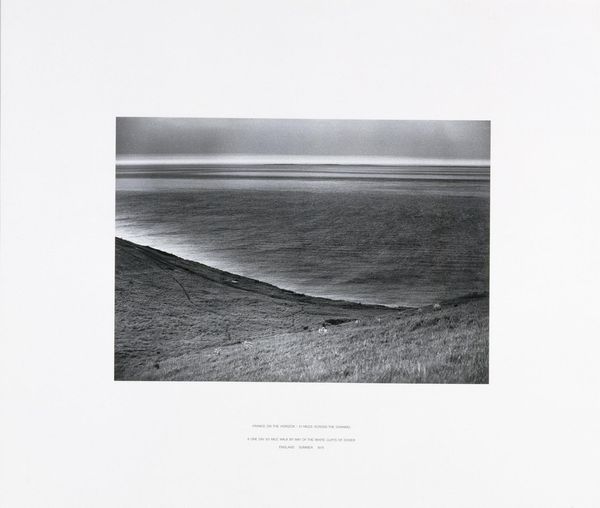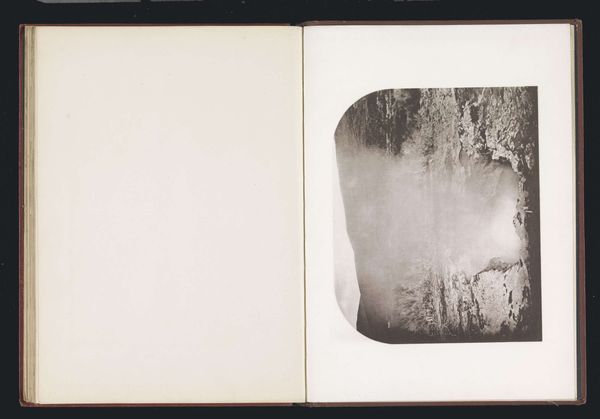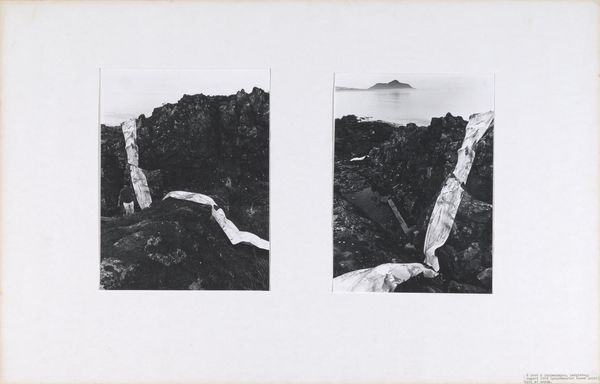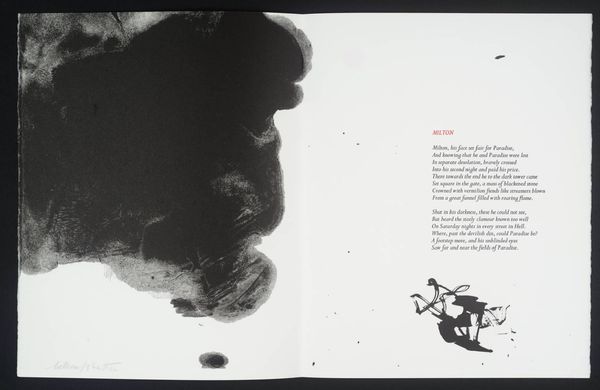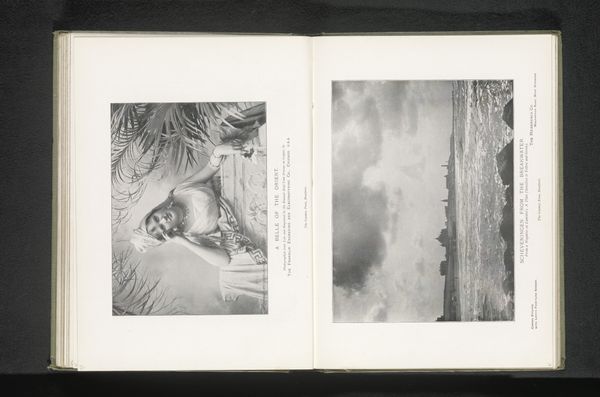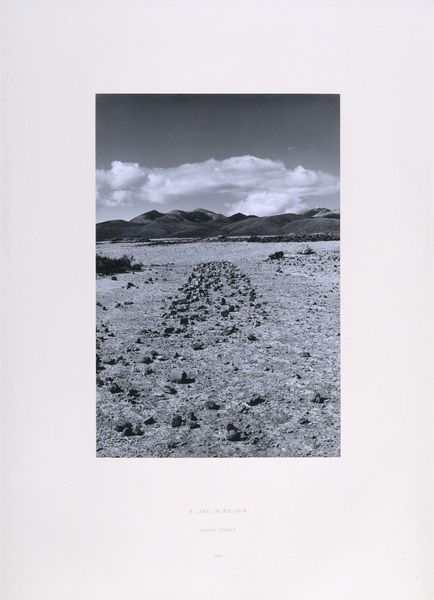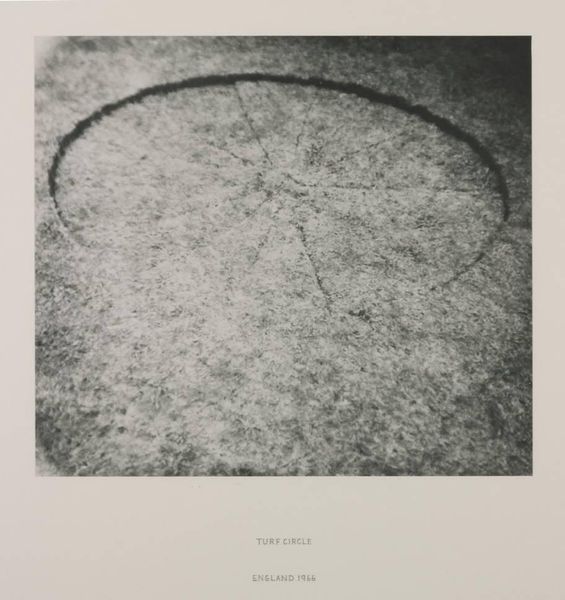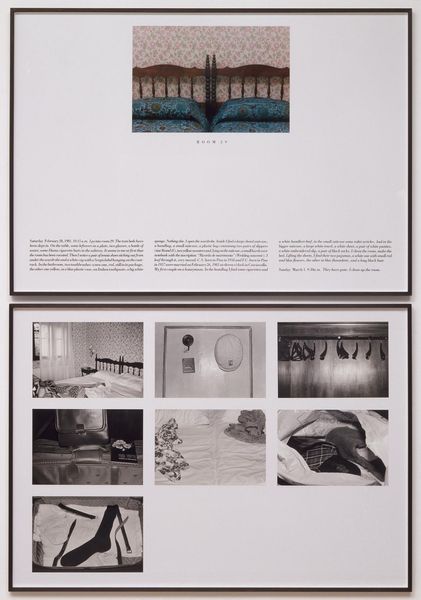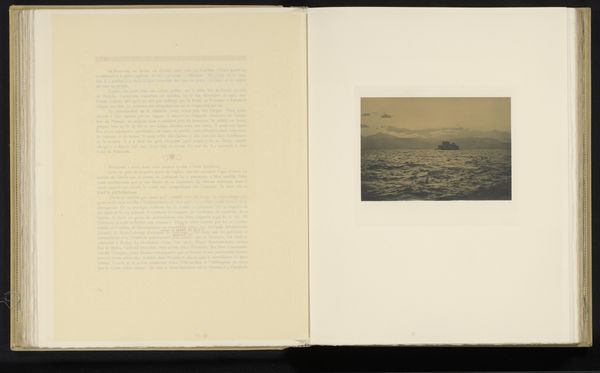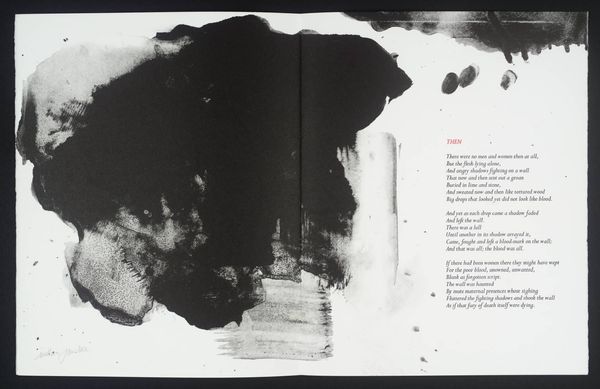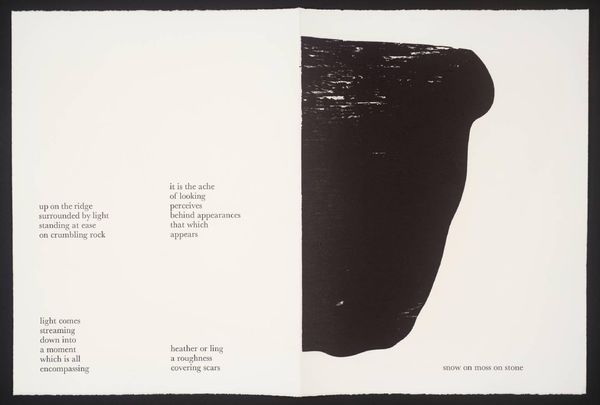
Dimensions: 565 x 819mm unconfirmed
Copyright: © Hamish Fulton | CC-BY-NC-ND 4.0 DEED, Photo: Tate
Curator: This is Hamish Fulton’s "A Condor," part of the Tate collection. Note the triptych format, combining three monochromatic photographs. What's your immediate reaction? Editor: It strikes me as a visual haiku—spare, suggestive, and deeply evocative of place through simple forms and varying contrasts in light and shadow. Curator: Precisely. Fulton's art often explores themes of walking and the environment, and here the sequential images create a subtle narrative. The first panel, with the setting sun, offers a strong contrast. Editor: Yes, it seems to symbolize endings and beginnings. The middle panel, featuring clouds over Lake Titicaca, is about transition. Curator: Consider the final image, of reeds. Do they symbolize the journey's end or a new path? Editor: Perhaps both. It's that ambiguity that makes it so compelling. The symbols and their arrangement tell a story of place and transition. Curator: Indeed, and the formal restraint amplifies the emotional resonance. Editor: It's more than just photography; it's a meditation on landscape and movement.
Comments
Join the conversation
Join millions of artists and users on Artera today and experience the ultimate creative platform.
tate 6 months ago
⋮
This work evokes the experience of a walk in Bolivia that Hamish Fulton shared with Richard Long in 1972. The photographs denote time (a setting sun or shadow line) and movement (the walk itself). The right-hand and centre photographs were taken at the same point on Illampu mountain. The shadow line is made up of reeds taken from Lake Titicaca, and pelican feathers. They were left there in the snow. The title refers to the bird that circled overhead during the journey. Fulton has said about works such as this: ‘What I build is an experience, not a sculpture’. Gallery label, February 2010
